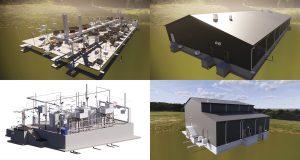In the rapidly evolving world of civil engineering and the consulting industry, the adoption of new technologies such as artificial intelligence (AI), automation, and low-code or no-code tools is transforming the way we design, construct, and maintain our built environment. However, amidst this technological revolution, one factor remains crucial to successful implementation: people.
The Power of People in Technology Adoption
While these technologies offer immense potential, their successful adoption hinges on the people who use them and the integration of these tools into their daily workflows. It is the peoples’ commitment to embrace change, learn new skills, and adapt to new ways of working that ultimately drives technology adoption.

Fear often plays a significant role in the adoption of technology. It can stem from various sources, such as a lack of understanding, apprehension about change, or fear of being replaced and loss of value. This fear can hinder the adoption process, as individuals may resist learning new technologies or changing established workflows. However, through education, training, and clear communication about the benefits and necessity of these technologies, organizations can help alleviate fears and foster a more accepting and innovative culture — and that benefits stakeholders at all levels. It’s important to remember that while technology can automate many tasks, it’s the human element that drives innovation and progress.
The Role of Training & Education
To facilitate this process, it’s essential for firms and agencies to invest in training and education. This not only equips staff with the necessary skills to use these technologies but also helps to alleviate any fears or misconceptions about their use. By fostering an environment of continuous learning, firms can ensure that their staff are not just users of technology, but advocates for it.
In addition to high-level training, developing a proof of concept is a powerful strategy to demonstrate the value of new technology. A proof of concept is essentially a small-scale implementation of the technology, designed to showcase its potential benefits in a real-world context. It allows stakeholders to see firsthand how the technology works and the improvements it can bring to existing processes. By presenting tangible results, a proof of concept can help alleviate fears and uncertainties associated with the new technology, encouraging more widespread adoption. It also provides an opportunity to identify and address any issues or challenges before a full-scale implementation, thereby reducing risks and ensuring a smoother transition. Ultimately, a well-executed proof of concept serves as a compelling testament to the value and viability of the technology.

The Importance of Leadership
Leadership also plays a critical role in technology adoption. Leaders must champion these technologies, demonstrating their benefits and showing how they can improve efficiency, reduce costs, and enhance the quality of our work. By setting a positive example, leaders can inspire teams to embrace these new tools and technologies.
The Impact on Clients & the Public
The adoption of these technologies also has significant implications for stakeholders at all levels – including the recipients of the solutions developed. From rehabilitated bridges to new wastewater treatment infrastructure to documents that guide planning decisions for the next 100 years, by understanding the flow of data, we can capture visual insights on projects, leveraging automation through computational design to streamline and combine previously manual tasks. By leveraging generative AI to get closer to the desired outcome in a fraction of the time, we can deliver projects and traditional tasks more effectively, allowing practitioners to spend their time bringing new value to projects.

The adoption of new technologies in the AEC industry doesn’t necessarily mean that the projects will cost less in terms of monetary investment. The real value lies in the enhanced outcomes these technologies can deliver. They can lead to greater insights to guide better solutions, while improving efficiency, accuracy, and speed in project execution, all of which benefit the recipients.
Conclusion
In conclusion, while technology is transforming the AEC industry, people remain at the heart of its successful adoption. By investing in training and education, championing these technologies at the leadership level, and communicating their benefits to clients and the public, organizations can, and will, ensure they are at the forefront of this technological revolution. At MSA, we have a companywide commitment to learning and a dedicated team of digital design professionals whose mission is to advance our firm’s expertise in a variety of technologies and tools — and their creative, responsible use.
After all, technology is only as good as the people who use it.
